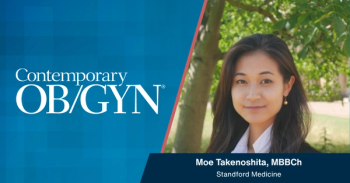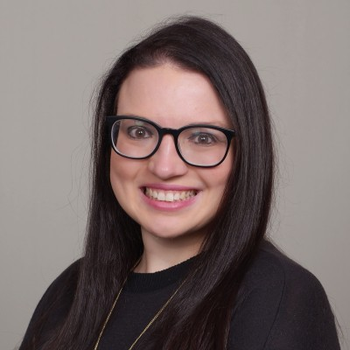
New Product – PC Based Ultrasound
OBGYN.net Conference CoverageFrom AIUM 44th Conference held in San Francisco, California - April, 2000
Dr. Ed Zabrek: "We’re here at the AIUM in San Francisco 2000, and I’ve been scanning the floor looking for what I consider to be the best of the show. I’m here talking with J. Kerr Spencer and their product and the name of the manufacturer is Terason. Terason is a new concept in ultrasound technology where you basically throw away your box and carry your transducer in your black bag and you’re ready to go. We’re going to talk a little bit today about the company, the history of the company, where the future of the company is going, and where they are right today."
J. Kerr Spencer: "Thanks, Ed."
Dr. Ed Zabrek: "There’s an ultrasound picture on a computer display board right now, can you tell me a little bit about this?"
J. Kerr Spencer: "Sure, first of all I’d like to tell you that Terason was founded about five years ago, we’re a spin-off of MIT’s Lincoln Laboratories. Our core competency is in low power, high speed micro-miniaturized A6C-mos. This is the heart and soul of the machine."
Dr. Ed Zabrek: {"Bruce, you want to focus in on this?"} "It looks like an ice cube. It’s a Lucite block with about a centimeter by a half centimeter chip, can you tell me the power of this chip?"
J. Kerr Spencer: "The computational power of this chip allows us to micro-miniaturize our traditional ultrasound into this package which weighs around 8 oz. This is 128 channel ultrasound imaging system that is compatible with any PC running Windows NT 4.0 or above. The interface to the PC, and we have quite a few here that we’ll talk about in a moment, is through the Fire Wire - the IEEE-1394 Fire Wire - which is the same type of interface used for a digital video camera."
Dr. Ed Zabrek: "Is this readily available?"
J. Kerr Spencer: "Of course it is, this is industry standard and high-speed data transmission."
Dr. Ed Zabrek: "Now let me ask you, this is a Fire Wire so anybody with a PC could hook this Fire Wire up?"
J. Kerr Spencer: "Conceptually any computer that runs Pentium III, 15 or a 10 gig hard drive with a 192 megs could drive this operating system and drive this ultrasound imaging device."
Dr. Ed Zabrek: "And that would be with an add-on card of some sort?"
J. Kerr Spencer: "No, all it needs is a 1394 port on the device. Most of the modern computers are coming out with Fire Wire support because of their pervasiveness of digital video cameras. That’s driving the adoption of this high speed data transmission cable which is 400 MHz so these plug into the side into a port that’s already rested in the computer. We activate our operating software by touching an icon just like you would for Word or Internet access and the PC continues to perform as a PC. The difference is we activate our operating system and we turn it into a ultrasound image data collection device which is 128 channels, runs in frequencies from 2 MHz to 10 MHz, supports flat-a rays - what we call linear rays, curved linear rays for obstetrics, and true phased array imaging for cardiac."
Dr. Ed Zabrek: "And this will do color flow Doppler?"
J. Kerr Spencer: "They are initially introducing the product with B mode or brightness modulation which is a gray scale imaging for morphological studies, power Doppler which is to look at flow states, velocity Doppler to allow us to look at directional flow states, and spectral Doppler for quantification."
Dr. Ed Zabrek: "What are the plans for 3-D at this point, you didn’t mention 3-D?"
J. Kerr Spencer: "Fortunately for us, 3-D seems to be more or less ubiquitous in that everyone’s running on Windows NT 4.0 or others with various decorrelation methods or position sensors. So we can import these software programs into the ubiquitous PC which is still doing what a PC does and then tie in our data collection with their reconstruction algorithms."
Dr. Ed Zabrek: "Very good, so ultimately people who are doing third party 3-D reconstruction potentially could work on your system."
J. Kerr Spencer: "That’s the beauty of this model we are not dedicating a lot of resources to user interfaces, proprietary hardware or software, we’re letting the natural revolution in the PC industry continue its course and the millions of dollars being spent to optimize the PC, we are able to take advantage of. For example, this is a brand new computer; it’s a ruggedized military spec computer. It has a graphical user interface and a touch panel so that the customer can configure the user interface to their needs. You can touch the panel, you can change the display size, you can adjust the image, and you can send it over the Internet. You can J-PEG it, you can Photo Shop it, and you can acquire other data too. That’s an important concept, Ed, and that not only do we acquire ultrasound imaging data and store it on the normal PC but we can also plug in an electronic stethoscope, EKG systems, blood pressure systems, and acquire data, a wealth of data on the patient, send it to the computer, and analyze this data."
Dr. Ed Zabrek: "And to take it to its next logical conclusion, if you have a wireless LAN card you could actually link it to your PC software in your office and use it for other things aside from ultrasound, maybe get some information off the Internet if you’re looking up a difficult case and use it as your basic workstation appliance."
J. Kerr Spencer: "The PC is Internet capable as it comes to you, we load our software in and we make it ultrasound capable or EKG or blood pressure and so on. So to your point, if you are hooked to the Internet you acquire data, ultrasound data in this case, and you can go into the deep wall of information on the Internet and my-net pull up cases of abnormal-normal ultrasound studies, look at pathologies and so on, and compare what you’re doing on your patient to a database."
Dr. Ed Zabrek: "Or on the other side, if you want to capture your data and say e-mail it to a consultant."
J. Kerr Spencer: "Absolutely."
Dr. Ed Zabrek: "Your on live on the fly."
J. Kerr Spencer: "Your file clip could be just about anywhere in the world and get a consultation from any other medical center in the world."
Dr. Ed Zabrek: "Very good, very exciting technology. Obviously, the thing I like about this is I have a lot of ultrasounds sitting collecting dust in my office and I have a lot of PC’s also that I can use in various applications so the upgradeability of this seems to be tremendous."
J. Kerr Spencer: "We think so, the electronic board set that you see in this model will stay the same for any type of probe so you may have a phased array probe, a linear lay, or curved linear depending on the type of application you’re hoping to scan, and you plug it into the PC that makes the most sense. Now Terason is very concerned about reliability and performance so we’re going to offer a preferred computer, frankly, a ruggedized military type spec computer so that if you do happen to drop it, it won’t damage it. It will still work, most spec can drop on concrete from a meter."
Dr. Ed Zabrek: "And it won’t crack the screen?"
J. Kerr Spencer: "It won’t crack the screen, they’ve turned it up in the air, it’s what the military spec requires. These things will continue to evolve and the beauty for you is a year from now this product will be even more robust and lighter. This will stay the same so you can evolve into the next generation of PC but not have to make another investment in an ultrasound machine."
Dr. Ed Zabrek: "Okay, so I see there are other transducer technologies and issues here, can you describe what you have here?"
J. Kerr Spencer: "Again, this is the connection to the PC through the 1394 also known as the Fire Wire and this is the same electronics module that I had in my hand a moment ago but for certain applications the size of the transducer is very important. So specifically, with cardiac where there’s a limited access to get between the ribs we’ve maintained a very small footprint. You place it between the ribs, the traditional cardiac type probe and the ultrasound system, this electronics module, fits in your pocket or on your belt like a cell phone, and this connects to the ubiquitous PC. As technology evolves such a Blue Tooth which is a very high-speed wireless data standard..."
Dr. Ed Zabrek: "At a local level wireless."
J. Kerr Spencer: "Within a 30 feet range at the moment, conceptually these devices can become wireless and you’re no longer tethered to the PC."
Dr. Ed Zabrek: "And as far as this device here, this is a single all in one unit. Are you going to have hot plugable transducers which may be able to go into a device like this at some point in the future, is that in the plans?"
J. Kerr Spencer: "Yes, that’s an excellent question because as I said earlier, the electronics module - the board set - runs all the different probe formats and frequencies. The operating system tells the board set what to do so we can make this disconnect from this so you have one electronics module and a family of probes that you would plug in depending on the type of application whether it be obstetrics, cardiac, vascular, and so on."
Dr. Ed Zabrek: "Sounds great for teaching hospitals, labor and delivery units, and pretty much everything you can name out there."
J. Kerr Spencer: "We think that taking ultrasound to the patient has a lot of advantages for the patient especially because their not exposed to the trauma of moving down to radiology and back perhaps and the waiting trauma associated with that. We can go right to the patient’s bedside, acquire data, send the data to the hospital server if necessary, store the data, analyze it later, and so on as you well know."
Dr. Ed Zabrek: "Speaking of ultrasound acquisition and data, how would you say your image compares to the industry leaders out there?"
J. Kerr Spencer: "I would answer that by saying our benchmarking is focused on products costing between $80,000 and $120,000. As you all know, phased array capability, the ability to use a true phased array at this time is limited to systems in the $60,000 and above range because of the complex electronics required to do the beam steering. So our target benchmarking for image quality is mid-range products $80,000 to $120,000 so that’s a very high goal but we fully understand that image quality is critical to our success, and we have set very high standards for ourselves."
Dr. Ed Zabrek: "Very good, are you currently selling product at this point?"
J. Kerr Spencer: "We are doing clinical verification and benchmarking, and some of the benchmarking are the images that you see here today at the 44th AIUM and we will continue to do that for the next few months. We’ll begin to take orders this summer, and we will ship our first product late this summer."
Dr. Ed Zabrek: "Do you have an idea of price point?"
J. Kerr Spencer: "A price point is determined somewhat by the probe configuration and also the computer but roughly $20,000 to $40,000 for a full up working system. The range just covers the options like power Doppler, velocity Doppler, and spectral. As you add these options the price naturally will go up."
Dr. Ed Zabrek: "Can you tell me a little bit about some of the people who work with the company and what their backgrounds are?"
J. Kerr Spencer: "Be happy to, we were a spin-off of MIT’s Lincoln Labs, the company is roughly five years old. Dr. Alice Chang is the founder and President of the company, I believe you’ll speak with her later. Other industry veterans are Gail Buurma who’s the Vice President of Sales for us, she is an industry veteran with over twenty-five years of experience in ultrasound from Diasonic’s Vingmed to a robust teaching career prior to that and most recently with GE Medical Systems."
Dr. Ed Zabrek: "She’s a sonographer?"
J. Kerr Spencer: "She was a sonographer but her most recent tenure has been leading sales forces."
Dr. Ed Zabrek: "But she knows how to do ultrasound?"
J. Kerr Spencer: "She can still scan we hope. Most recently we’re very pleased to have another addition to our team, Lois Shefler, who comes to us from Hewlett Packard and was a lead clinical person for them. I don’t want to embarrass Lois but she’s responsible for an awful lot of our image quality improvements and working with the clinical verification phase. That was also her focus at HP so she comes to us with just a wealth of clinical knowledge and also teaching experience. Myself, I’ve been in ultrasound since 1976. I was with a start up company called ADL Ultrasound at that time which brought real-time ultrasound to the private office physician. Then another start-up company after ATL acquired us called Acoustic Imaging, which some of you may remember, we had a nice tenure there and very good imaging. I spent five years with Acuson and then recently was with General Electric until Alice found me and offered me a position within her company."
Dr. Ed Zabrek: "Great, it sounds like the company has a very strong pedigree."
J. Kerr Spencer: "Thank you."
Dr. Ed Zabrek: "I enjoyed talking with you, I’d like to just get Alice over here just so we can say hi and introduce you to the OBGYN.netters."
Dr. Alice Chiang: "Hi, I’m Alice Chiang and before I started Teratech Company, I was at MIT Lincoln Labs for more than eighteen years developing real-time signal processors for the military applications. After eighteen years we realized the technology can be applied to civilian functions and we identified ultrasound as a perfect match to the technology that we developed. That’s how Terason started and that’s how we can micro-miniaturize the whole thing from many, many boards into a few chips, and you can hold the whole system in your hand."
Dr. Ed Zabrek: "So Alice, the stockholders are wondering when this company is going to go public."
Dr. Alice Chiang: "We will do the best we can, I think appreciate the product first."
Dr. Ed Zabrek: "I really enjoyed talking with you and you have a very exciting product that I think is going to revolutionize ultrasound in both obstetrics, gynecology, and cardiology and we look forward in seeing your progress in the future."
Alice Chiang: "Thank you very much, we have the same confidence."
Dr. Ed Zabrek: "Thank you."
"We’re going to take a pan around for those of you who couldn’t be at AIUM 44. These are various systems that Terason is displaying which would include the system that we showed, there’s a regular plain manila laptop, silicon graphics workstation which Bruce is getting to right now, all the way down to a Toshiba Lobreto which actually can even get a reasonable image on. If you go all the way to the other table Bruce you’ll see a unique device, it looks kind of like a tablet. When I went to Comdex, this device won best of show. You can see on the side of the CD-ROM it’s an all encompassing touch panel tablet that has, I think, about a 6 gig hard drive, CD-ROM, possibly DVD and I think it’s about a 300 MHz Pentium II at the time. So obviously this product will be able to be adaptable to a number of systems, existing systems, including desktops. Though on the initial offering the company wants to control the hardware so that if there are any issues they’ll be able to troubleshoot them instantly as opposed to having issues that might not be resolvable based on having your own hardware. I would say in a year or so once the testing is in the hardware will be probably a little bit more liberal as far as using your own. Hope you enjoyed the new information and talk to you soon."
You can visit
Newsletter
Get the latest clinical updates, case studies, and expert commentary in obstetric and gynecologic care. Sign up now to stay informed.




















